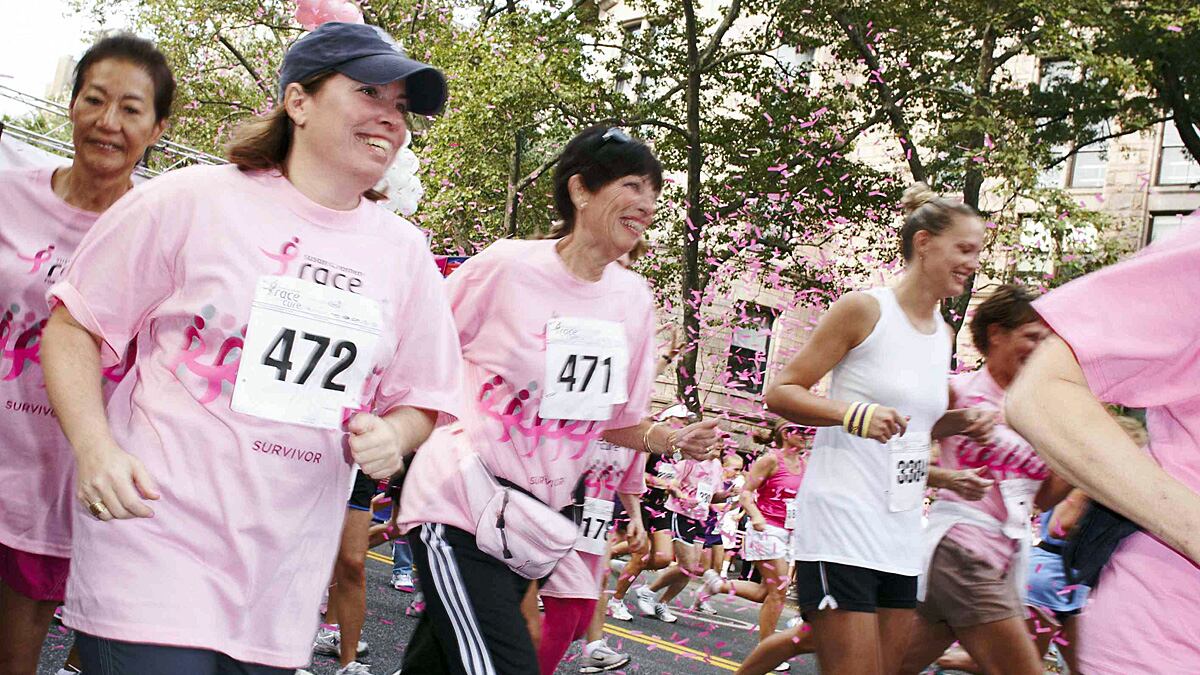This Sunday marks one of the biggest fundraising events of the year for the cancer-fighting Susan G. Komen Foundation—the annual Race for the Cure in New York City. More than 21,000 people took part last year, says Vern Calhoun, the acting executive director of Komen’s Greater New York City affiliate. This year, he says, the number of participants is “significantly down,” and “at the end of the day, it’s the women who most need services that suffer.”

Two days ahead of the race, participation is down more than 25 percent from last year, according to Calhoun. He says a chunk of participants do generally register in the final few days, with around 5 percent signing up on the day of the race itself. Nonetheless, he says, the race revenue numbers so far are “very frustrating.”
He notes that 75 percent of the net money raised at local races stays in the local community, with the other 25 percent going to national breast-cancer research. “I’m not sure people understand that,” Calhoun says. Last year, he says, thanks to the race in Manhattan, his group gave some $3 million in grants to the local New York City community, and $1.4 million to national cancer research.
The local funds, he says, go to “grassroots breast-health screening, treatment, education, support … all these incredible programs. Without the funding that the Komen affiliates provide, speaking specifically for Komen Greater NYC, a lot of these lifesaving programs may close.” He adds, “There are a ton of races in September and October all over the country. People need to understand, this is not just true here in New York City—this is true in every town that has a Komen race.”
Komen race participants and donations have dropped across this country this year, following the controversy that rocked the charity in January, when it decided to change its granting structure, which would have phased out a grant to Planned Parenthood. Observers assumed the move was political, since Planned Parenthood performs abortions, along with its preventive-health and family-planning services. An uproar ensued, and Komen apologized and reversed the decision.
One former Komen executive, Karen Handel, has told The Daily Beast that the grant restructuring was not about politics, but money in a tough economy. At the same time, she said, Catholic bishops were instructing donors across the country not to give money to Komen due to its relationship with Planned Parenthood, putting the breast-cancer charity in a bind.
Says Calhoun, “We made a mistake and we’re genuinely sorry for it, but I don’t understand why at-risk women should have to suffer for a mistake that was made, apologized for, and rectified. When we have these people who are out there shouting about, you know, ‘Komen is not looking out for women’s health,’ that just isn’t the case. I really don’t understand how you wipe away 29 years of really, really good work because of one misguided decision.”
Komen has invested some $1.9 billion in breast-cancer initiatives since its start in 1982. Its founder and chief executive, Nancy Brinker, started the charity in honor of her sister, Susan G. Komen, who died of breast cancer in her 30s. Brinker built the group into one of the most powerful cancer-fighting organizations in the world, with more than 100,000 volunteers working in a network of affiliates around the country, organizing local fundraisers and pink-ribbon races.
Brinker recently said she will step down as CEO but remain in a managerial role. Liz Thompson, Komen’s president, is leaving this month. A string of other executives has departed in recent weeks, including vice president of communications Leslie Aun and vice president of development Julie Teer, the group’s chief fundraiser. The former head of the Greater New York City affiliate, Dara Richardson-Heron, left in the spring.
“The organization is changing internally, significantly,” Calhoun says. “We will probably have a new CEO and a new president by early next year. It is going to be a completely different organization. There’s work that’s going on to give the affiliates a much greater voice—which is fantastic—and to make sure that what happened at the beginning of the year won’t happen again.”
Komen’s signature Global Race for the Cure in Washington, D.C., this summer saw a drop in participants to around 27,000, from 37,000 last year, the group has said. In addition, Komen had to cancel its annual lobbying day in D.C., an event at which activists push for government breast-cancer programs, not Komen programs—raising concerns that the controversy would have far-reaching effects on women’s health.
Calhoun says Komen’s Greater New York City team has been “going out on site visits to our grantees to let them know there’s a high probability we won’t have as much money to grant for next year.” He says the economy plays a part, but believes the scandal is the main factor. “It just keeps coming back,” he says. “It’s just the gift that keeps on giving,” he jokes. “You know, and this may sound silly, but this feels more personal. Komen Greater NYC is a grassroots organization. It’s not like we’re getting million-dollar contributions. We’re getting $5, $10, $25 contributions, a lot of them. That’s what’s funding $3 million worth of grants, which is huge.”
He adds, “By not supporting your local affiliate, you’re basically not supporting the women in your community. If we have less money to grant, we’re going to be able to do less for the community. I just don’t see what there is to be happy about in that regard. How can you be happy that uninsured, unemployed, many women in at-risk minority groups, are not going to get a mammogram or be treated for breast cancer?”
He says he hopes people will rally in the next two days and sign up for the race in Central Park. As for the weather forecast on race day, he says with a laugh: “It may rain. I’m hoping it’ll clear up.”





